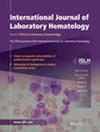Diagnostic Value of Botryoid Nuclei as a Biomarker of Severe Hyperthermia and Systemic Inflammation in Heatstroke and Neuroleptic Malignant Syndrome: A Challenge of Climate Change
Abstract
Introduction
With the increasing frequency of heat waves due to climate change, heat-related illnesses are becoming more common. Heatstroke is a life-threatening condition characterized by hyperthermia and multiple organ failure. A rare morphological feature, botryoid nuclei, has been identified in the peripheral blood of patients with hyperthermia, but its significance is not well understood. This study investigates the diagnostic value of botryoid neutrophils as a potential marker of severe hyperthermia and systemic inflammation in heatstroke and neuroleptic malignant syndrome.
Methods
We performed a retrospective analysis of six patients with hyperthermia who were admitted to the Hospital Clínic of Barcelona and the Hospital de la Santa Creu i Sant Pau during the summers of 2023 and 2024. Peripheral blood smears were analyzed using CellaVision DM9600, MC-80, and DI60 analyzers. Blood cell counts were obtained using Advia 2120i and Sysmex XN analyzers. Biochemical parameters were measured using Atellica Solutions and Alinity analyzers.
Results
Among the six cases, five were diagnosed with heatstroke and one with neuroleptic malignant syndrome. All patients exhibited botryoid nuclei in leucocytes (8% to 29%), more frequently observed in neutrophils. Hematologic findings included leucocytosis, neutrophilia with left shift, and thrombocytopenia. Biochemical analysis revealed significant organ dysfunction, including elevated liver enzymes, renal failure, and increased inflammatory markers, such as procalcitonin and lactic acid.
Conclusion
Botryoid-nuclei leucocytes may serve as a diagnostic marker for hyperthermia-related conditions, including heatstroke and neuroleptic malignant syndrome. This finding underscores the relevance of early recognition and intervention in patients presenting with hyperthermia and systemic inflammation.

 求助内容:
求助内容: 应助结果提醒方式:
应助结果提醒方式:


